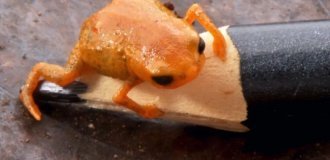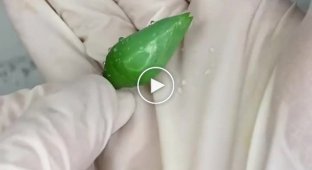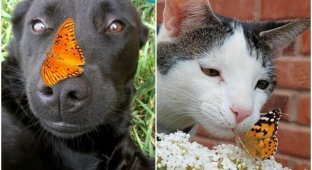A pensioner collected a collection of 4.2 million butterflies (5 photos + 1 video)
A 74-year-old Kenyan man wants to sell a collection of several million butterflies that he has collected almost his entire life. 
Kenyan collector Steve Collins has been collecting African butterflies for 60 years. His collection includes 4.2 million specimens. As he plans to retire, Collins has offered to buy his collection for $8 million.
What began as a childhood hobby more than six decades ago has led to the creation of the largest butterfly collection in Africa in the suburbs of the Kenyan capital.
Steve Collins, 74, was born and raised in western Kenya. At age 5, he became fascinated with butterflies and began collecting what is now more than 4.2 million specimens representing hundreds of species.
“My parents inspired me to start collecting butterflies after a trip to the Congo where friends gave them a butterfly net,” Collins says. “By the time I was 15, I was already traveling to other countries, like Nigeria, to learn more about butterflies.” 
While working as an agronomist, Collins devoted all his free time to researching African lepidopteran insects. In 1997, he founded the Institute for the Study of African Butterflies.
Now, short on space and time, he hopes to pass on the work to a new generation.
On his 1.5-acre (0.6-hectare) property, hundreds of native trees and flowering shrubs form a dense forest. Thousands of butterflies flit from flower to flower, landing on Collins's hand as he walks his property.
His collection is privately owned, although it was originally opened to the public. Collins ran it as an educational center between 1998 and 2003.
Collins has 1.2 million butterflies from across Africa, neatly pinned in frames and arranged in rows on shelves, and another 3 million in envelopes.
"They need to be kept in a dark place," the collector explains. "This way of storing the dried butterflies will not become food for other insects. We treat the collection with insecticides once a year."
Julian Bayliss, an ecologist who specializes in the study of African ecosystems and a visiting professor at Oxford University, says he has been collecting butterflies for Collins for more than two decades.
"Much of this collection can no longer be replaced because the butterfly habitats in Africa are shrinking and some species are critically endangered or even extinct," Bayliss says.
Africa is sensitive to climate change. Periods of prolonged drought and severe flooding are destroying forests and other butterfly habitats.

Bayliss has proposed digitizing the collection to make it globally accessible.
“Whoever takes it on needs to be a scientific institution that is well funded and secure,” he said.
Scott Miller, an entomologist at the Smithsonian Institution who met Collins nearly 30 years ago, said such collections provide important information that can show how the environment has changed over the past 60 years.
“You can go back to these specimens over and over again to learn new information, use new research techniques, or address related scientific topics,” Miller said.

Edgar Emojong, assistant butterfly collector at the African Butterfly Research Institute (ABRI), catches butterflies in Nairobi, Kenya
Collins is worried that he will soon no longer be able to carry out his research. He said his most valuable butterfly is worth $8,000. The collector hides it from public view, fearing possible theft, and hopes to sell the collection to an individual or research institution.
The Butterfly Institute has high running costs. The institute's annual budget was $200,000. The figures are published on the website of the African Lepidopterist Society. Lepidopterists are specialists in the study of Lepidoptera, or butterflies, moths, and moths.
Collins estimates that the specimens and other assets are worth $8 million.

"This has been a hobby of mine for decades and I can't put a price on what I've done so far. My current focus is to make sure that the fruits of my labor are in good hands when I leave this world," Collins said.
























